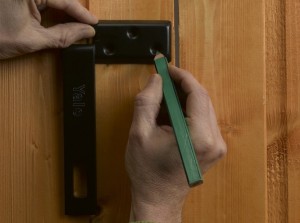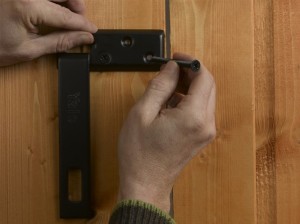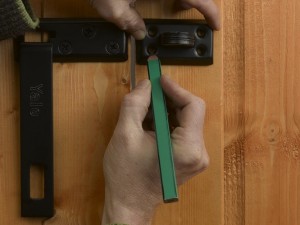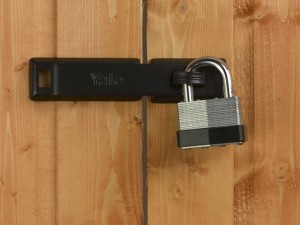Fitting a hasp and staple for a padlock
A simple way of making an outbuilding or shed more burglar proof is to fit a hasp and staple that can then be secured with a padlock. The example below shows fitting to a shed, as although sheds often come supplied with some form of bolt, a hasp and staple will add a further level of security.
 |
1. Use a bradawl or pencil to mark the fixing holes for the hasp and then drill pilot holes so that you can screw the hasp in position. |
  |
2. Using the fixings provided, fix the hasp to the door. |
  |
3. Mark the fixing points for the staple and make pilot holes as before. Then, fix the staple in place, again using the supplied fixings. |
  |
4. Choose a padlock that is designed for outdoor use. The hasp and staple fixings will be hidden behind the hasp plate making it tamper proof. |
Hasp and staple tips
- The fixings supplied with a hasp and staple are often a lot longer than required for a shed door (which is generally a lot thinner than most doors). However, this does give you the option to fit a batten to the inside of the door, at the fixing level, to make a more robust security set up.
- You can also upgrade security further by fitting hasps and staples in pairs with one towards the top of the door, and another closer to the bottom.
